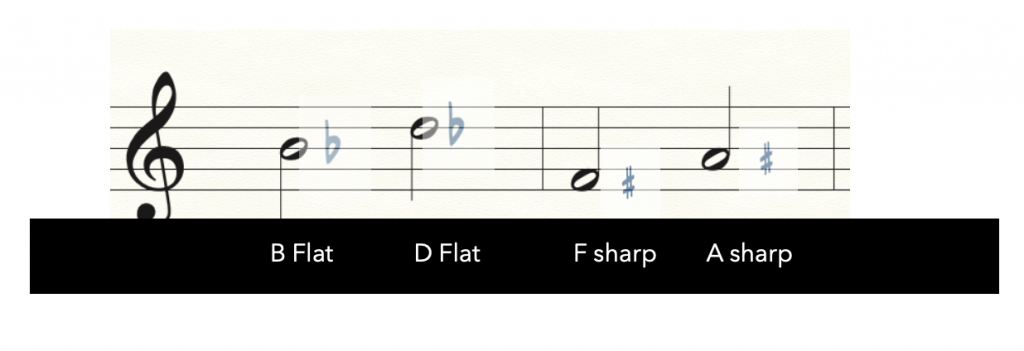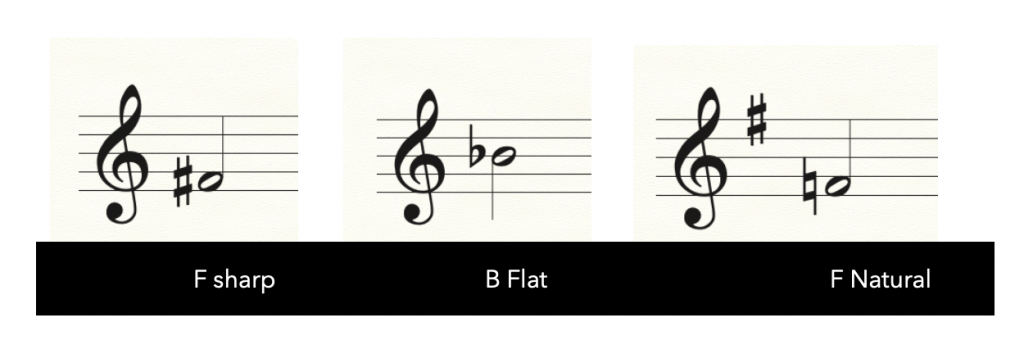Introduction
In music, there are many traditional ideas or concepts that have been taught and passed down through the years that are only “half-true”. This series of ideas, developed by H.E. Nutt, co-founder of VanderCook College of Music, seeks to make you think of improved ways of teaching the student. His concept was that “why do we teach “half-truths”, only confusing the student and interfering with their progress?” If we teach the student exactly what the concept means from the beginning, we will eliminate the long term confusion and so when the student progresses, they will do so without questioning the validity of what was taught in the first place.
This series can be “controversial”, so proceed with caution…
Series Four
READING PITCHES by LETTER NAMES
Did you ever see this when grading a music theory worksheet from your students AND you marked it wrong for “naming the notes?”

Or how about this, when the note was listed and the student had to write the notes in?

This one really hits home, as a young piano student, we had theory assignments. When it came to note reading, I had many “mistakes”, if the assignment asked me what the notes were “name the notes”… I would write the answer AS I SAW it. When it asked me to draw the notes in, I would write the answer AS I SAW it. Both were always “wrong”. Why do we perpetuate this “half truth” from generation to generation? When I finally arrived at VCM and was taught about this, it really made a lot of sense!
Traditionally most students have been taught to read the pitch names as……

This is a Half-Truth!
The whole truth is, the sharp, flat or natural SHOULD be read BEFORE the letter name. That’s the way it is written, so that’s the way it should be read. The sharp, flat or natural is never written AFTER the note, so why read it that way! Why read backwards! Retrogression in reading SLOWS down the reading AND causes pitch mistakes.
The student must read and think each note with it’s sharp, flat, or natural, as a UNIT. (Sharp F), (Flat B), (Natural F) and not as two separate items. THIS is the TRUE way to READ.

The whole truth is, the sharp, flat or natural SHOULD be read BEFORE the letter name. That’s the way it is written, so that’s the way it should be read. The sharp, flat or natural is never written AFTER the note, so why read it that way! Why read backwards! Retrogression in reading SLOWS down the reading AND causes pitch mistakes.
The student must read and think each note with it’s sharp, flat, or natural, as a UNIT. (Sharp F), (Flat B), (Natural F) and not as two separate items. THIS is the TRUE way to READ.
Most students do pretty well when the sharp, flat or natural is written in front of the note. Trouble comes in trying to remember from the KEY SIGNATURE which notes are sharp, flat, or natural. Here the system advocated really pays off!
If the student is not THINKING the sharp, flat, or natural IN FRONT of the letter name, it shows immediately in the playing of wrong notes.
In learning any scale, the student must think and read each unit correctly. For example… in reading the scale of THREE FLATS, he should recite….

In doing it this way, the student is fixing the correct units of that scale in their thinking. It is a matter of learning, not memorizing. If the student reads the letter name and then has to look back at the key signature to decide whether it is sharp, flat, or natural… THAT’S TOO LATE. There isn’t time to look back. The student MUST know BEFORE the note is played. They must think and read the proper symbol in FRONT of every note that is played.
Try it out, it REALLY does help the student THINK the right note BEFORE it is played… It helps eliminate… B (student presses 2nd button on trumpet)…oops, flat (student then presses 1st button.). I have NEVER had a student who made an honor band, and the conductor calls it the Traditional way be confused…. BUT when they first start to learn how to read, it sure helps SAVE confusion on reading music!






